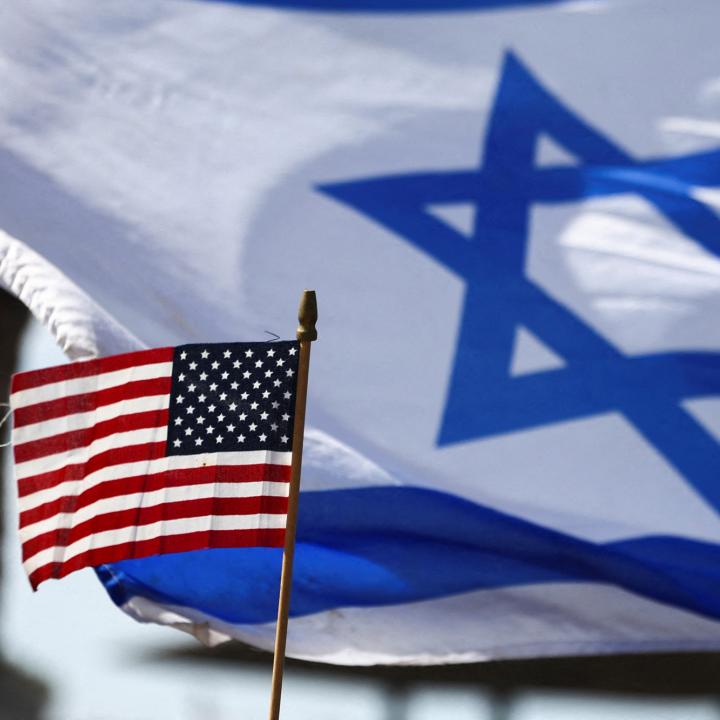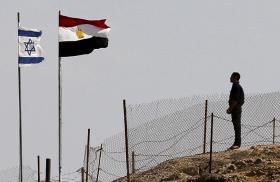
- Policy Analysis
- PolicyWatch 4112
Assessing Israel-U.S. Alignment on the Gaza Framework

Prime Minister Netanyahu will likely accentuate the positive in his response to President Trump’s initiative to end the war, but key details—let alone Hamas’s response—could decide whether the plan ultimately succeeds or falls prey to another “yes but” cycle.
At his September 29 White House meeting with President Trump—the most consequential of their four formal encounters this year—Israeli Prime Minister Binyamin Netanyahu will need to decide whether and to what extent he accepts a U.S.-devised 21-point framework to end the Gaza war. All indications suggest that he will adopt a tone supportive of the plan. A truly affirmative answer could boost U.S.-Israel relations at a time of growing Israeli isolation—but it could also cost the prime minister his coalition, forcing an election many months ahead of schedule. Alternatively, Netanyahu could answer “yes but” based on his assumption that Hamas could object to its disarmament—and thereafter allow the plan to unravel, blaming the terrorist group.
The United States appears to be seeking a balance that incorporates the concerns of all actors, including Arab states, while averting Israeli political tripwires. This amounts to broad principles that Netanyahu could theoretically support, but aside from calling for an immediate ceasefire, the release of all hostages, and an influx of humanitarian aid, the U.S. plan leaves open questions about implementation and timetables. Moreover, the principles have shifted with successive drafts of the plan, creating a sense of uncertainty, which could prompt various actors to seek last-minute changes.
On the upside regarding U.S.-Israel alignment, the plan defers two key issues—the timing of the ultimate role of the Palestinian Authority (PA) in Gaza governance and immediate talks toward a two-state solution. Nevertheless, political rivals within the prime minister’s coalition could easily seize on such issues in order to bring down the government and then campaign on a platform even more resistant to compromise.
A scenario in which Netanyahu genuinely accepts the U.S.-led plan may have many explanations, among them his possible belief that it offers the best way to end the war. He may accordingly have in mind the model enacted after Israel’s repeated strikes against Hezbollah, whereby Israel turned over disarmament implementation to other actors while reserving the right to intervene militarily in cases where the group remained armed.
If Netanyahu is serious about pursuing the Trump plan, he will focus on asking legitimate security questions, including:
- How comprehensive—and intrusive—will Hamas disarmament be? The assumption is that disarmament will begin as soon as Israel leaves Gaza. But questions remain about a shared U.S.-Israel definition of the group’s “offensive” capabilities to be dismantled by a proposed International Stabilization Force (ISF), including Arab participants. For example, will an ISF focus only on tunnels and weapon facilities, or will it also effectively seek out Hamas’s weapon and grenade caches? (Undoubtedly, Hamas will claim all of its capabilities are defensive.)
- What are the common metrics for assessing Palestinian progress? Establishing clear goalposts will be essential for ensuring success.
- What terms will allow for Israeli security intervention? This would apply if an envisioned ISF comprising Arab and other countries fails to disarm Hamas—and would be the most diplomatically sensitive of the questions.
U.S. Objectives
The proposed approach encompasses several core objectives, such as ending the war, securing the release of all hostages shortly thereafter, and laying the groundwork for a new governing framework in Gaza that includes Hamas’s disarmament. The plan also seeks to create a Palestinian governing entity that has international support and can thereby mobilize the financial resources needed for Gaza’s reconstruction. Several provisions—such as rejecting Israeli annexation of Gaza and opposing any encouragement of Palestinian emigration—appear aimed at clarifying Washington’s view of Israeli control over the territory as finite. Finally, the plan calls for the United States to enlist the parties to discuss a possible future two-state solution but does not include such talks as an immediate objective.
Likely Objections from Hamas
The U.S. plan contains two major elements that Hamas could resist:
- Disarmament. In Hamas’s view, this feature of the plan could ensure that the group cannot reconstitute itself. Even though Hamas endorsed the March 4, 2025, Arab peace plan—which calls for other actors to govern Gaza in its place—one can assume that the group regards arms as a lever of coercion against any government that strays from its preferences.
- Gradual Israeli withdrawal. All 20 live Israeli hostages as well as 28 dead bodies—likely alongside 250 Palestinian prisoners and 1,700 detainees—would be released immediately after the ceasefire announcement. Because the ISF will need time to assume its positions, Israeli withdrawal would not be immediate.
Likely Objections from Israel
For Israel, some of the toughest concessions would appear to come later:
- Eventual PA control of Gaza. Under the plan, the Palestinian Authority could take control of Gaza, although only after completing unspecified internal reforms. Until then, Gaza will be headed by Palestinian technocrats supervised by an international board, with security carried out by the ISF.
- Expectation that Washington will urge negotiations for a two-state solution. Even though this would occur down the road, the notion of a two-state solution remains unpopular in the post–October 7 Israeli domestic discourse, and acceptance of this concept would likely draw particular blowback from the right.
- No Gaza annexation. Netanyahu’s hard-right government partners Bezalel Smotrich and Itamar Ben-Gvir both favor annexation and could threaten to leave the coalition in protest of such a requirement. Moreover, the document is widely reported not to be encouraging Palestinian emigration in spirit, even though President Trump floated such an idea earlier this year, drawing support from the Israeli governing coalition.
Netanyahu has a few options for responding to these challenges. In a case where he basically accepts the U.S. plan, he can downplay these seemingly difficult terms on the assumption that Israel will never actually have to meet them. Alternatively, should Netanyahu demur on the plan, effectively breaking with Trump, he could magnify them as wedge issues as Israel enters an election year. In either case, Netanyahu may for the first time have to choose between Trump and his coalition.
What if Hamas Says No?
It remains unclear if the 21-point American plan includes a fallback scenario in the event of a Hamas rejection. Point 17 of a slimmer version, according to one report, would allow a post-Hamas Palestinian entity to emerge in southern Gaza only, where Israel says it has essentially defeated the group. Indeed, the IDF claims to control more than 75 percent of the territory, and Netanyahu has called Gaza City the “last bastion of Hamas.” Whereas such a plan could coexist with Israel’s ongoing military campaign in Gaza City, it faces complications on at least two fronts: (1) Netanyahu would apparently have to allow hostages to remain in captivity against a split screen of internationally backed interim governance in southern Gaza and continued Israeli military operations in the north. (2) The plan might not be politically tenable for Arab and Muslim states should these very actors be enlisted as part of an ISF to police southern Gaza while Israel is still fighting in northern Gaza.
Recommendations for U.S. Policy
In anticipating Prime Minister Netanyahu’s response to the U.S. Gaza proposal, Washington must prepare to strike a balance between moving forward decisively and clarifying terms where necessary. A protracted litany of “yes but” responses from Netanyahu could sap momentum and eventually unravel the initiative, thus extending the unimaginable captivity of the hostages. But addressing the Gaza question is highly complex, and offering greater specificity on security issues will smooth the process. Progress overall will require close coordination among Washington, Jerusalem, and key Arab partners on sequencing the transition, as well as clear shared definitions of core objectives and agreed-upon metrics for implementation.
Conclusion
In the short term, stated U.S. objectives for a post-Hamas Gaza largely align with those of Israel—as outlined in the 21-point plan—including disarmament of the terrorist group and release of the remaining Israeli hostages. But even if they do not require immediate action, longer-term prospects like PA governance in Gaza and possible talks toward a two-state solution could create major political strains for Netanyahu. He has balked at such moves for fear of alienating his base even when no election loomed; with the next contest a year away, he may be even more reluctant to take risks. But he also recognizes the value of his relationship with Trump and may be wary of presenting it with its most serious test yet.
David Makovsky is the Ziegler Distinguished Fellow at The Washington Institute, director of its Koret Project on Arab-Israel Relations, and a former senior advisor on Israeli-Palestinian negotiations in the State Department.



